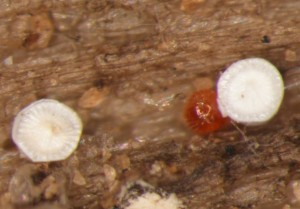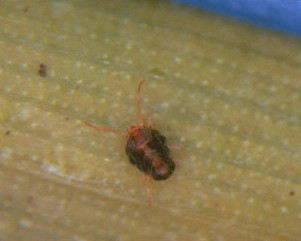Brown Wheat Mite
 Scientific Name
Scientific Name
Petrobia latens
Hosts
Wheat, etc.
Symptom
Brown wheat mite causes problems in wheat that is already stressed due to lack of moisture. They feed by piercing plant cells in the leaf, which results in "stippling". As injury continues the plants become yellow, then dry out and die. Brown wheat mites feed during the day, and the best time to scout for them is in mid-afternoon. They do not produce webbing and will quickly drop to the soil when disturbed. They are very susceptible to hard, driving rains, but until then they can cause yield loss when present in large numbers They are more common in western Oklahoma and the Panhandle.
Description

Life Cycle
Brown wheat mites can complete a life cycle in as little as 10-14 days. Like greenbugs, newly hatched brown wheat mites are all females. They will produce up to 3 generations each year, but have probably already completed at least one by now. Numbers will likely decline if a hard, driving rain occurs. Spring populations begin to decline in mid-late April when females begin to lay “diapause” eggs.
Control
Please contact your local county extension office for current information.

